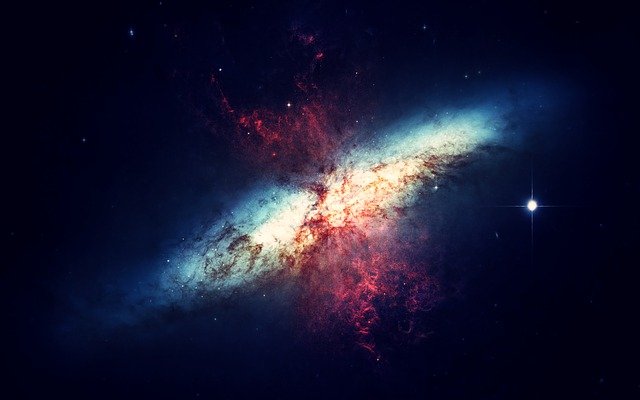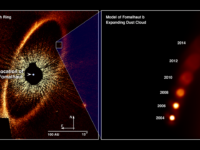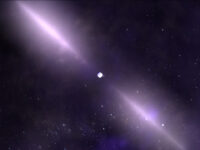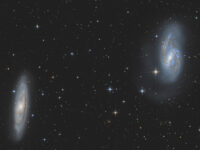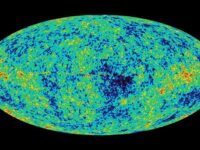Black holes are known as eradicators of light and matter, earning a mysterious and destructive reputation. However, these space oddities have behaviors, albeit occasionally baffling, that may help construct the conceptual building blocks of scientific phenomena all across the universe. As is common in the world of science, one discovery can cause ripple effects across previous interpretations and methods. One such discovery lies in the development of echo mapping, a light-based technique that, furthered by the behavior of black holes, potentially plays a role in mapping the rest of the universe. More specifically, echo mapping locates bodies in space and, by extension, measures the space between them using chain reactions of light, matter, and thermal energy.
However, these space oddities have behaviors, albeit occasionally baffling, that may help construct the conceptual building blocks of scientific phenomena all across the universe.
The properties of light, with respect to time and distance, ensure that experts can apply physical behaviors observed within the structure of black holes to the structure of light-producing galaxies as a whole. Using improved telescopic sensors and years of imaging, experts recently reinforced the idea that black holes indirectly emit a characteristic light from a chain reaction starting in their inner regions. Light does not originate from within the black hole itself but rather from nearby superheated atoms that form a plasma disk around the black hole. This accretion disk may burn brightly enough to produce visible light, which then travels outwards through subsequent layers of cooler plasma disks. Each layer encircles one another and exhibits the echoes of the previous layer’s light emission. Finally, as the light continues outwards, it reaches the inner surface of a cloud of dust, which encircles the entire system. This cloud of dust, known as a torus, absorbs the light, which is then transferred to heating dust particles that emit new infrared light.
Scientists observe both the visible and infrared light from the plasma disks and cloud of dust respectively. It is the locations where these emissions occur that determine the dimensions of the black hole, a technique that eventually enables the mapping of any luminous entity involved. Typically, the torus exists relatively far from the plasma disks (potentially trillions of miles away). This is thanks to high heat energy, radiated by the plasma, preventing dust formation until temperatures decrease to at most 2,200 degrees Fahrenheit. Thus, the more energy in the plasma, the farther away the torus begins. By measuring the time between flashes of visible and infrared light, scientists determine the distance between the outermost plasma and innermost dust (using constant speed of light). Knowing the relationship between distance and (the decrease of) heat energy, scientists can find the original energy of the plasma disks, which is directly proportional to their luminosity. These echoes of light between plasma and dust allude to the more scientific term for this process, dust reverberation mapping.
Scientists observe this process from Earth, and consequently employ techniques to relate what they witness to what actually occurs in distant galaxies. The basis for comparative light measurement, as followed by some scientists, relies on differentiating this true luminosity of a body from its apparent brightness to observers on Earth. The difference between those levels of light indicates the conditions and distance from where the light first traveled. Here, telescopes use echoes of brightness seen on Earth to calculate original luminosity, with which scientists reverse-calculate the distances between celestial bodies and components. Once again, calculations may consider the speed of light, interaction with dust particles, and surrounding temperatures when evaluating light associated with mapping black holes.
Here, telescopes use echoes of brightness seen on Earth to calculate original luminosity, with which scientists reverse-calculate the distances between celestial bodies and components.
The aforementioned relationships between distance and echoes of light and energy are not entirely new, but, with refinement of technology and insight, mapping black holes continues to gain support as a future way to map galaxies (for which black holes are the center or component) relative to Earth. By creating reference points for massively complex and disparate galaxies, experts may improve their understanding of the deeper expanses of the universe. Light measurements, in the context of time and distance, can also improve estimation of the time and manner in which an entity formed. However, there is skepticism toward the accuracy of current technology and methods. For example, the exact behavior of the torus, and the need for long-term data for light traveling across larger black holes, requires further investigation. Nonetheless, these luminous black holes remain the candle in the wind for the pursuit of echo mapping and for the efforts to ensure that the chance to perceive the far reaches of the universe comfortably from Earth is more than dust in the wind.
Nature Astronomy (2020). DOI: 10.1038/s41550-019-1002-x
The Astrophysics Journal (2020). DOI: 10.3847/1538-4357/aba59b
